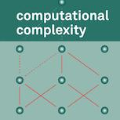Sparse Identification of Nonlinear Dynamics (SINDy) is a method of system discovery that has been shown to successfully recover governing dynamical systems from data (Brunton et al., PNAS, '16; Rudy et al., Sci. Adv. '17). Recently, several groups have independently discovered that the weak formulation provides orders of magnitude better robustness to noise. Here we extend our Weak SINDy (WSINDy) framework introduced in (arXiv:2005.04339) to the setting of partial differential equations (PDEs). The elimination of pointwise derivative approximations via the weak form enables effective machine-precision recovery of model coefficients from noise-free data (i.e. below the tolerance of the simulation scheme) as well as robust identification of PDEs in the large noise regime (with signal-to-noise ratio approaching one in many well-known cases). This is accomplished by discretizing a convolutional weak form of the PDE and exploiting separability of test functions for efficient model identification using the Fast Fourier Transform. The resulting WSINDy algorithm for PDEs has a worst-case computational complexity of $\mathcal{O}(N^{D+1}\log(N))$ for datasets with $N$ points in each of $D+1$ dimensions (i.e. $\mathcal{O}(\log(N))$ operations per datapoint). Furthermore, our Fourier-based implementation reveals a connection between robustness to noise and the spectra of test functions, which we utilize in an \textit{a priori} selection algorithm for test functions. Finally, we introduce a learning algorithm for the threshold in sequential-thresholding least-squares (STLS) that enables model identification from large libraries, and we utilize scale-invariance at the continuum level to identify PDEs from poorly-scaled datasets. We demonstrate WSINDy's robustness, speed and accuracy on several challenging PDEs.
翻译:对非线性动态(Sindy) 的 Sprassar 识别是一种系统发现方法,它显示能够成功地从数据中恢复对动态系统的治理(Brunton 等人, PNAS, '16;Rudy 等人, Sci. Adv.'17) 。 最近, 几个团体独立发现, 弱化的配方在数量上比噪音强得多。 我们在这里将( ar Xiv: 2005. 04339) 引入的Weak Sindy( Wsindy) 框架扩大到设定部分偏差方程式( PDEs)。 通过弱型式消除点性衍生衍生物近似近似, 能够有效地恢复无噪音数据( 低于模拟方案的容忍度) 的模型测试系数。 在大型噪声系统中( 信号到噪音比率比率比率比率比率比率比率), 将我们最差的测试函数从快速变换换为 $N_ N_ dal= 开始。

























